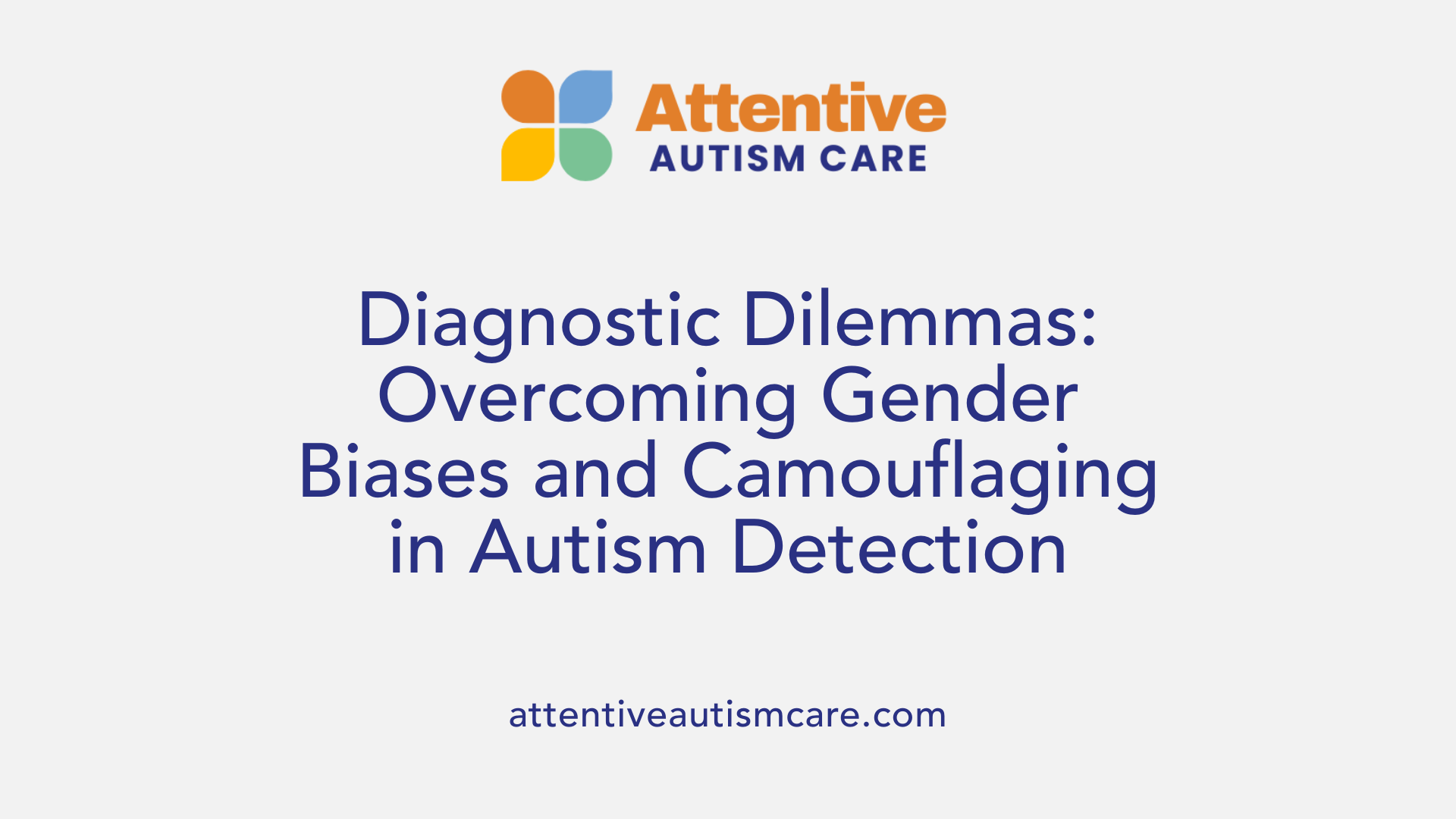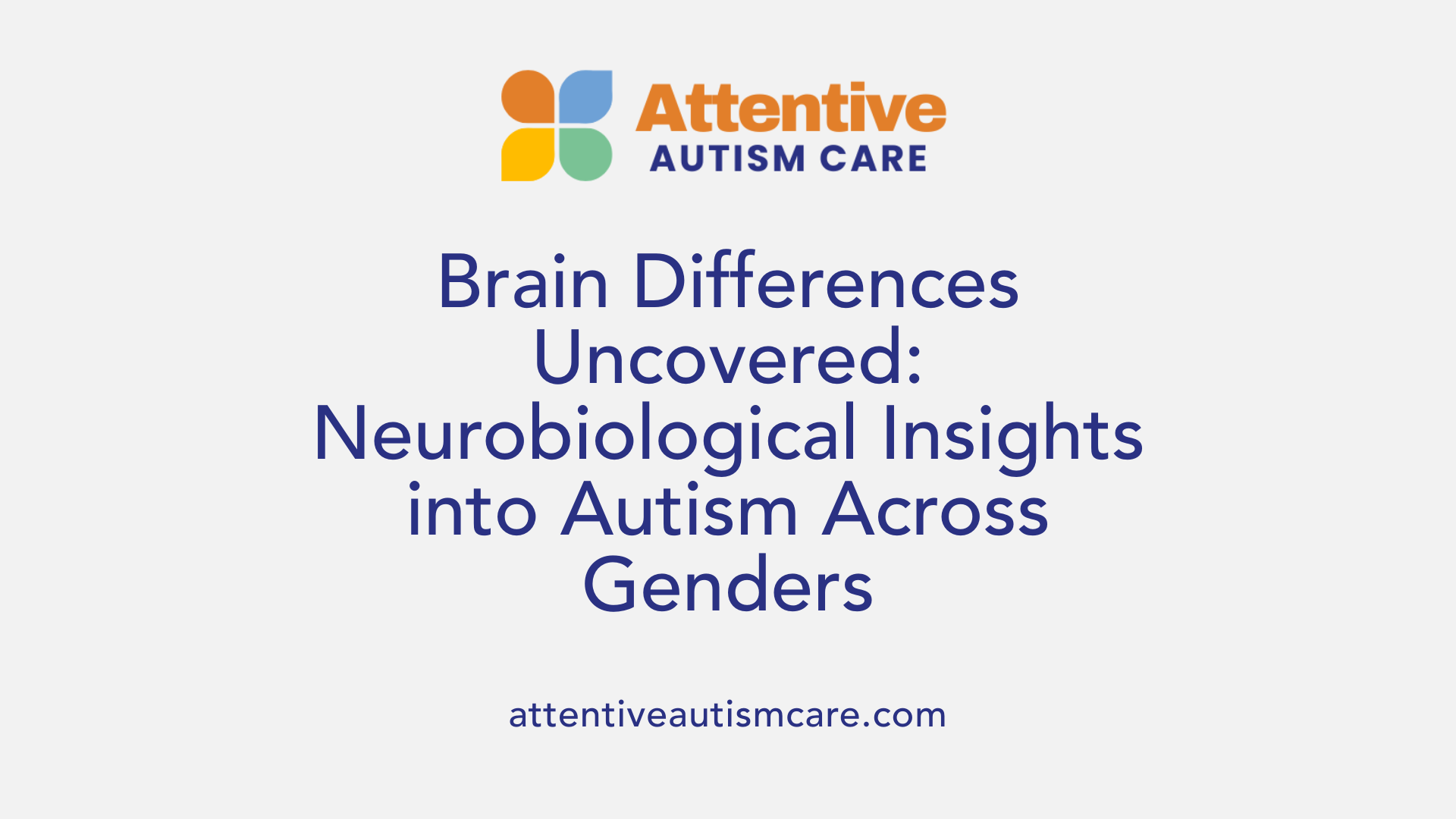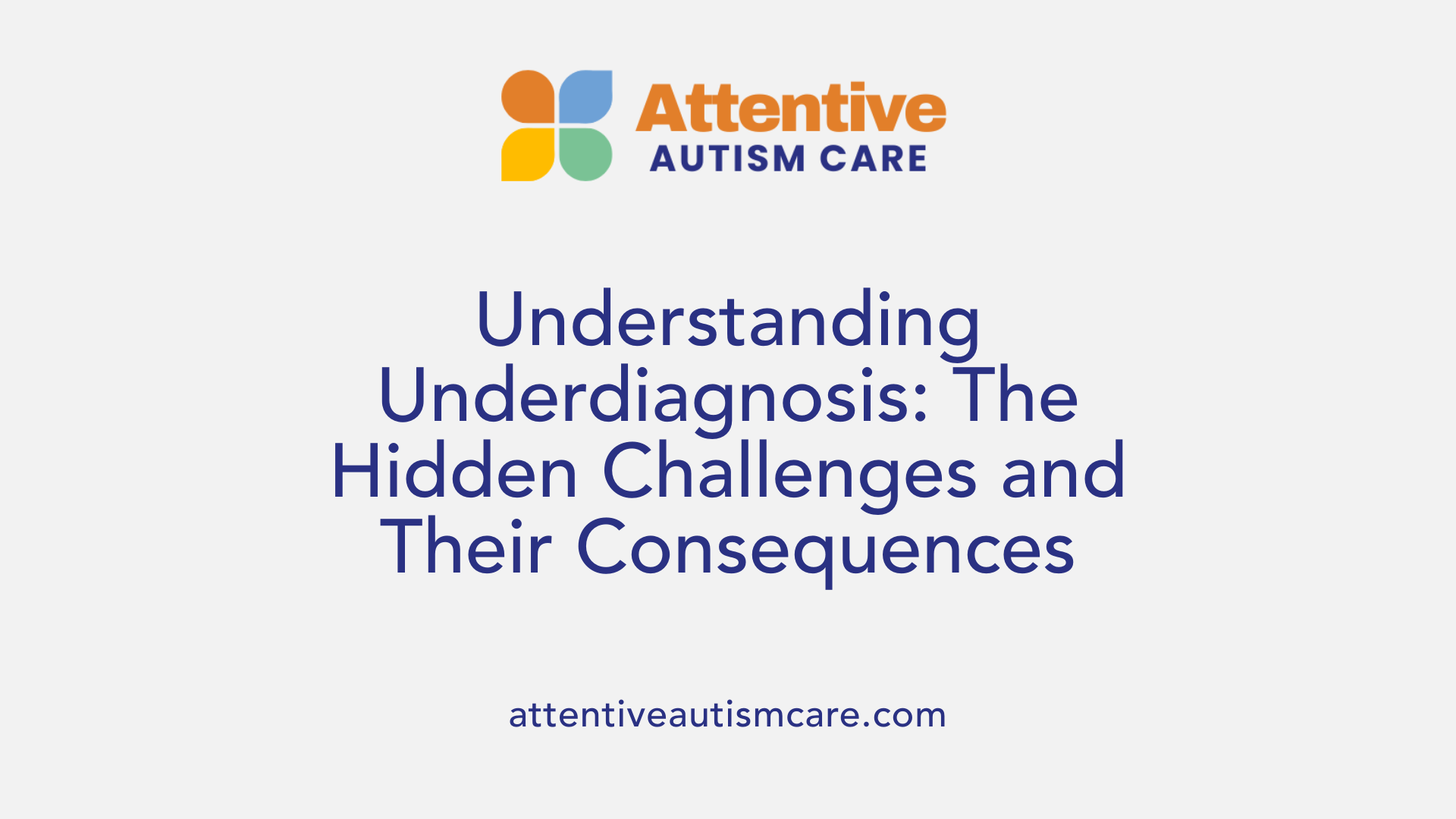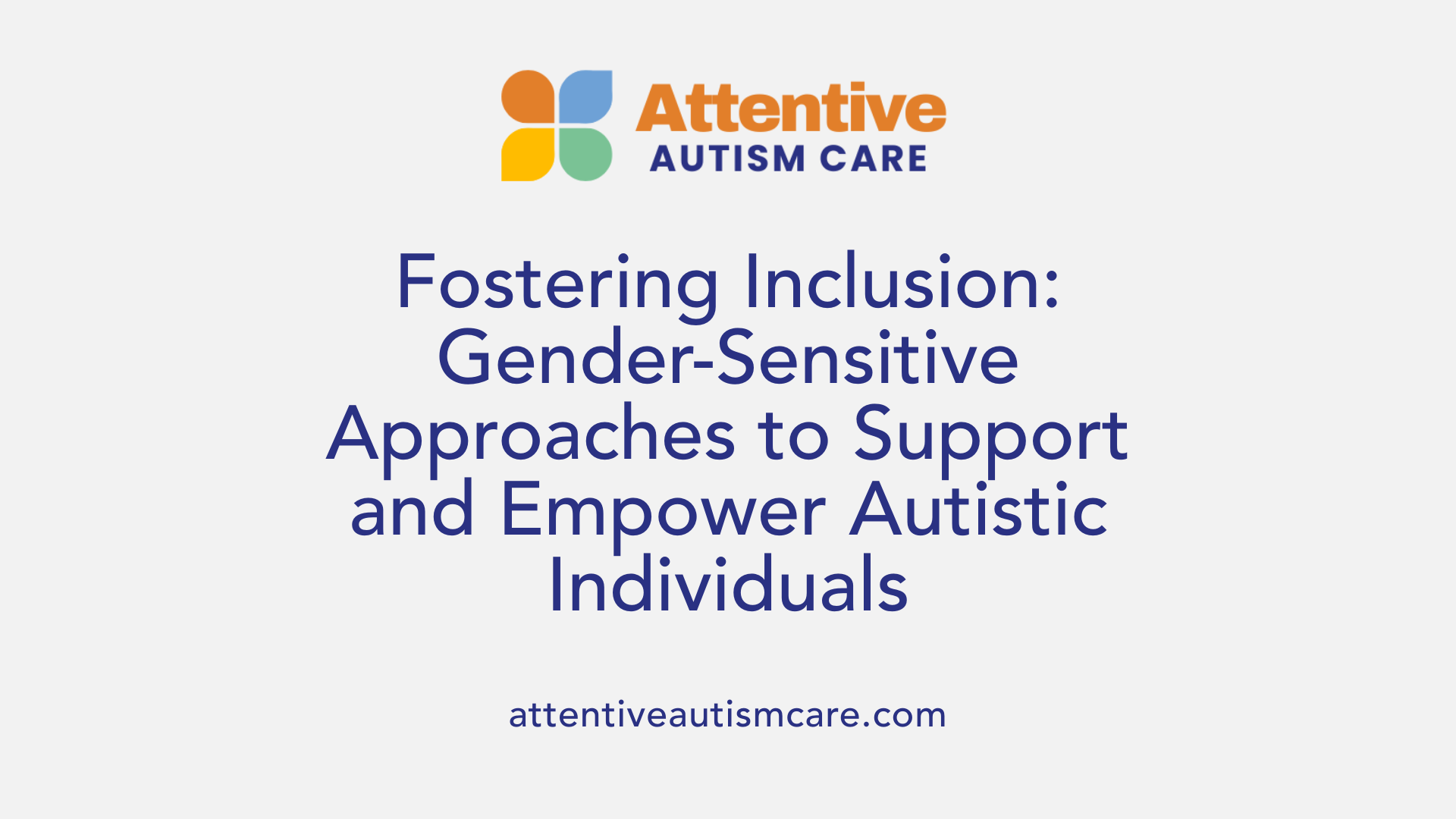Understanding Autism in Girls vs. Boys
Unveiling the Gender Gap in Autism Manifestation and Diagnosis

Introduction: The Nuances of Autism Across Genders
Autism Spectrum Disorder (ASD) presents uniquely in girls and boys, shaped by biological, behavioral, and societal factors. While traditionally viewed as more prevalent in boys, emerging research highlights critical differences in how autism manifests across genders, influencing diagnosis, support, and outcomes. Understanding these differences is essential for clinicians, families, and educators to foster more accurate diagnosis and tailored interventions, ultimately improving the quality of life for autistic girls and boys.
Behavioral and Symptomatic Variations in Autism Between Girls and Boys

How does autism manifest differently in girls compared to boys?
Autism presents uniquely in girls and boys, often making diagnosis challenging, especially in females. Girls with autism tend to exhibit fewer outwardly noticeable repetitive behaviors and restricted interests. Instead, they often develop internalized routines and display subtle ways of engaging with their environment. For example, they may engage in quiet repetitive activities like organizing or collecting items that blend more easily into social stereotypes.
Research indicates that brain structure differences contribute to these behavioral differences. Variations in the motor cortex, supplementary motor area, and cerebellum are observed between girls and boys with autism. These regions are involved in motor planning and function, influencing how autistic traits manifest across genders. Additionally, patterns of gray matter in motor-related areas can accurately differentiate girls from boys, suggesting underlying biological bases for behavioral presentation differences.
Furthermore, girls are often better at masking symptoms through social mimicry or learned behaviors, complicating diagnosis. They might imitate peers' social interactions, suppress repetitive behaviors, or adapt their interests to seem more typical, which further obscures their true challenges. This masking, combined with subtler social difficulties and internalized behaviors, highlights the importance of understanding gender-specific manifestations in autism.
Challenges in Diagnosing Autism in Girls vs. Boys

What are the challenges in diagnosing autism in girls versus boys?
Diagnosing autism in girls presents unique hurdles, primarily because their symptoms often differ from the stereotypical signs observed in boys. Girls tend to be more subdued, controlling, and socially motivated, which can mask their autism traits. Many of their behaviors are quieter or more socially acceptable, such as collecting items like stuffed animals or engaging in interests like drawing, which may not trigger suspicion.
Furthermore, girls with autism are more likely to develop coping mechanisms such as mimicking peers or masking their difficulties. This camouflaging makes their autistic traits less noticeable in social interactions and often leads to late diagnosis or even complete oversight.
Compounding the issue is the fact that most diagnostic tools and criteria were developed based on male-centric samples. These tools tend to emphasize overt, stereotypical behaviors more common in boys, such as obvious repetitive movements or intense focus on certain interests. Consequently, subtle or internalized symptoms in girls, such as internalized routines, social anxiety, or sensory sensitivities, are often missed.
Adding to these diagnostic challenges are co-occurring mental health conditions like anxiety, depression, and eating disorders, which are prevalent among autistic girls. These can mask or mimic autistic symptoms, leading clinicians to misdiagnose or overlook autism altogether.
Societal stereotypes and gender biases also influence diagnostic perceptions. Since girls are often viewed as more socially adept or nurturing, behaviors that deviate from expected norms might be dismissed or attributed to other causes.
Overall, the combination of subtler symptoms, masking behaviors, gender-biased diagnostic standards, and co-occurring conditions makes it significantly harder to accurately identify autism in girls compared to boys.
Why is autism in girls often underdiagnosed, and how does this impact support strategies?
Autism in girls often remains undiagnosed or is diagnosed later than in boys because their symptoms do not fit the traditional stereotypes lawmakers and clinicians have relied upon. Girls are more adept at camouflaging their autistic behaviors, consciously or unconsciously suppressing signs that might otherwise trigger an assessment.
Many girls develop social skills and interests that align with gender expectations, such as engaging in typical hobbies or mimicking peer behaviors, which can hide underlying difficulties. Their repetitive behaviors tend to be quieter or more socially acceptable, like organizing or collecting, making them less noticeable.
This underdiagnosis has significant consequences. Without timely identification, girls miss out on early interventions designed to improve social, communication, and adaptive skills. Delayed diagnosis can lead to increased mental health issues like anxiety, depression, and low self-esteem. These conditions may become intertwined with their autism, making accurate diagnosis and targeted treatment more complicated.
Clinicians often rely on assessment tools that are not sensitive enough to detect internalized or subtle signs of autism in females. Consequently, many girls are diagnosed only in adolescence or adulthood when social difficulties become more apparent.
Supporting girls with undiagnosed autism requires a shift toward more inclusive, gender-sensitive diagnostic criteria and increased awareness among healthcare providers about how autism manifests across genders. Developing assessment tools that recognize camouflaging behaviors and internalized symptoms is crucial.
In summary, underdiagnosis hampers access to early interventions, which are vital for better mental health and social outcomes. Tailoring support strategies to recognize and address these gender differences can significantly improve the lives of girls with autism.
Neurobiological and Developmental Brain Differences by Gender

Variations in cortical thickness and development patterns
Recent research highlights significant differences in how the brains of autistic girls and boys develop over time. One notable finding is that at age 3, girls with autism tend to have a thicker cortex compared to their non-autistic peers, a trait that is less widespread among boys. Moreover, autistic girls undergo a faster rate of cortical thinning during middle childhood, which reflects distinct neurodevelopmental trajectories. These structural changes are not uniform but vary substantially across different ages, influencing the behavioral and cognitive profiles observed in each gender.
Brain regions involved in motor and social functions
Distinct differences have been identified in key brain areas responsible for motor control, social cognition, and language, such as the motor cortex, supplementary motor area, and cerebellum. Variations in the structure and connectivity of these regions contribute to the behavioral disparity seen between autistic girls and boys. For example, abnormalities in motor regions that influence movement and coordination are linked to gender-specific patterns of behaviors. Autistic girls often demonstrate subtle social interaction difficulties and internalized behaviors that are tied to these underlying neural architectures.
Sex-specific neural connectivity and patterns
Patterns of gray matter in motor and other related regions allow researchers to distinguish between girls and boys with autism with high accuracy. Brain imaging studies reveal that connectivity within neural networks linked to social and motor functions differ between the sexes. These differences influence how symptoms manifest, with girls frequently showing more internalized behaviors—like anxiety or obsessive organizing—and masking their issues more effectively, compared to boys who might display more overt repetitive behaviors.
Influences of hormones and genetics on brain development
Biological factors, including hormones such as estrogen and testosterone, coupled with genetic influences, are fundamental to the observed brain differences. The 'female protective effect' suggests that females might require a greater burden of genetic mutations or risk factors to manifest autism symptoms. These sex-specific influences shape the development of neural circuits, potentially leading to the subtler and internally focused presentation of autism often seen in girls.
| Aspect | Description | Impact on Autism Presentation |
|---|---|---|
| Cortical thickness | Girls show thicker cortex at early ages with faster thinning | Subtle behavioral differences, internalization |
| Brain regions | Variations in motor and social regions | Different motor skills and social interaction patterns |
| Connectivity patterns | Sex-specific neural network organization | Masking behaviors in girls, overt behaviors in boys |
| Hormonal and genetic factors | ACE influence neurodevelopment | Variability in severity and type of symptoms |
Understanding these biological and developmental distinctions is vital for advancing diagnosis and designing personalized interventions. Recognizing that neural trajectories differ by sex informs clinicians about why girls may often be diagnosed later and why their symptoms may be less obvious. These insights help tailor support systems that respect the neurobiological diversity in autism, offering more effective pathways to improve outcomes for all individuals.
Impact of Underdiagnosis and Its Ramifications

Why is autism in girls often underdiagnosed, and how does this impact support strategies?
Autism in girls tends to be underrecognized due to differences in how symptoms present compared to boys. Girls often develop subtle or internalized behaviors that are less obvious to clinicians. They may intentionally mask their difficulties—often called camouflaging—by mimicking peers or hiding repetitive and social challenges. Additionally, their interests and behaviors may align more closely with gender stereotypes, such as collecting objects or engaging in socially acceptable hobbies, which makes their autism traits harder to detect.
Moreover, standard diagnostic criteria have historically been based on male presentations of autism, leading to gaps when applied to females. Co-occurring conditions like anxiety and depression are common in girls with autism, which can mask or overshadow core autistic features, complicating diagnosis further.
This underdiagnosis impacts support strategies significantly. When autism isn't identified early, girls miss out on tailored interventions, educational accommodations, and social interventions that could improve their development and quality of life. Without appropriate support, they are more vulnerable to mental health issues, social difficulties, and trauma. To address this, clinicians need to adopt gender-sensitive assessment tools, consider camouflaging behaviors, and broaden behavioral observations to better recognize autism in girls, ensuring earlier and more effective interventions.
Enhancing Support through Awareness and Inclusion

How can understanding gender differences improve support for autistic individuals?
Recognizing the distinct ways autism manifests in girls and boys is vital for providing effective support. Research indicates that girls with autism often develop coping mechanisms like masking or camouflaging their behaviors, which makes diagnosis more challenging and can delay interventions. These masked behaviors might include subtle repetitive actions like skin picking or obsessive organizing, or more socially acceptable interests such as reading or collecting plush toys.
Because of these differences, traditional assessment tools mainly based on male-dominated data might overlook Autism Spectrum Disorder (ASD) signs in girls. Tailoring screening methods to account for gender-specific behaviors ensures more accurate diagnosis. For instance, clinicians can look for internalized difficulties, such as challenges with friendships, anxiety, or sensory sensitivities, that are common in autistic girls but less obvious externally.
Understanding these nuances leads to more personalized support. Interventions can be adapted to fit individual profiles, helping girls and women develop social skills, manage anxiety, and build confidence. This nuanced approach reduces misdiagnosis and helps individuals access timely services.
Tailoring assessment tools for gender differences
Assessment instruments should include behaviors relevant to girls, such as subtle repetitive behaviors or less stereotypical interests. For example, tracking internal routines, interests in stereotypically ‘feminine’ activities, and behaviors like masking can lead to earlier detection.
Developing gender-sensitive tools involves training clinicians to interpret behaviors within the context of gender norms and expressions. It also means raising awareness among educators and health professionals about the prevalence of underdiagnosed autistic girls.
Gender-sensitive intervention strategies
Interventions should acknowledge that autistic girls may experience higher rates of co-occurring conditions like anxiety and depression. Support programs should integrate mental health components and foster safe environments where gender identity can be expressed without stigma. For example, promoting social groups that respect individual gender identities can enhance social participation.
Furthermore, strategies that incorporate interests and strengths typical to girls, like social storytelling or collaborative activities, improve engagement and outcomes.
Supporting gender identity and expression
Most research emphasizes the importance of respecting each individual's gender identity. Many autistic girls and women may explore or identify outside traditional gender norms, and support systems should promote acceptance.
Creating inclusive spaces where gender diversity is embraced benefits mental health and social development. It encourages self-acceptance and reduces the stress associated with masking or conforming to societal expectations.
Community and family support importance
The role of family and community is crucial in fostering an inclusive environment. Educating families about gender-specific presentations of autism helps reduce stigma and supports advocacy.
Community programs can offer peer groups that respect and affirm diverse gender identities, which bolsters self-esteem, provides role models, and promotes social inclusion.
Table: Summary of Support Strategies
| Strategy | Focus Area | Benefits | Implementation Tips |
|---|---|---|---|
| Gender-sensitive assessments | Diagnosis | More accurate identification of autism in girls | Train clinicians, incorporate behavior variations |
| Tailored interventions | Support | Address mental health comorbidities | Use interests and strengths in therapy |
| Inclusive environments | Social inclusion | Enhance self-esteem and belonging | Promote gender diversity, advocacy |
| Family & community education | Awareness | Reduce stigma and misunderstanding | Offer workshops, resource sharing |
Understanding and addressing gender differences in autism help create a more supportive, inclusive society. This approach ensures that all individuals receive the care, acceptance, and opportunities they deserve, ultimately improving life outcomes and well-being.
How do patterns of gray matter in motor regions predict gender differences?
Patterns of gray matter within the motor cortex, supplementary motor area, and cerebellum are distinct between girls and boys with autism. These brain regions are involved in motor planning and movement coordination.
Research shows that certain patterns of gray matter in these regions can reliably distinguish girls from boys with autism. For example, girls tend to have more pronounced cortical thickness differences and faster thinning rates during childhood.
These structural variations are associated with behavioral differences. Girls often display fewer or less overt repetitive behaviors and may be better at masking their symptoms, thanks to variations in brain development.
Understanding these neural differences enhances diagnostic precision and guides the development of gender-specific intervention techniques. Tailoring support based on neural profiles opens new avenues for effective treatments.
Final Thoughts: Towards Better Understanding and Support
Recognizing the nuanced differences in how autism presents in girls and boys is a vital step toward ensuring timely diagnosis and individualized support. Advances in neuroimaging and behavioral research underscore significant biological and developmental distinctions, driven by sex-specific brain patterns and developmental trajectories. Addressing the challenges of underdiagnosis requires gender-sensitive assessment tools, awareness about masking behaviors, and comprehensive support strategies that validate gender identities and unique experiences. Promoting early detection and tailored interventions can mitigate mental health risks, foster social inclusion, and enhance life outcomes for autistic girls. Future research, inclusive diagnostic frameworks, and society-wide awareness are essential for bridging gaps, dispelling myths, and creating a more equitable environment for all individuals on the autism spectrum.
References
- Girls and boys with autism differ in behavior, brain structure
- Researchers find key differences in brain development ...
- Autism: Understanding the difference between girls and boys
- How do autistic girls present differently than boys?
- Why Many Autistic Girls Are Overlooked
- A comparison of the presentations of males and females ...
- Is Autism Different for Girls and Boys?
- Why Are Boys Diagnosed with Autism More Than Girls?



































































































